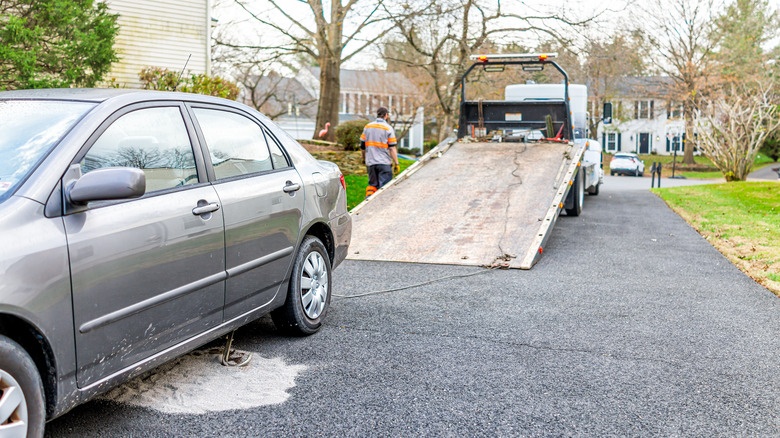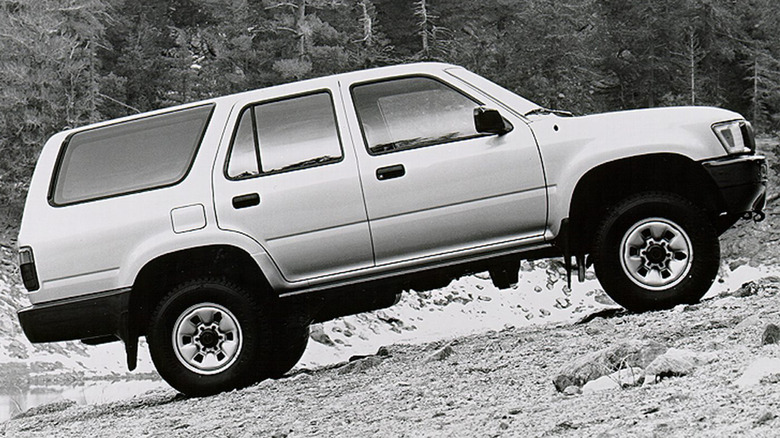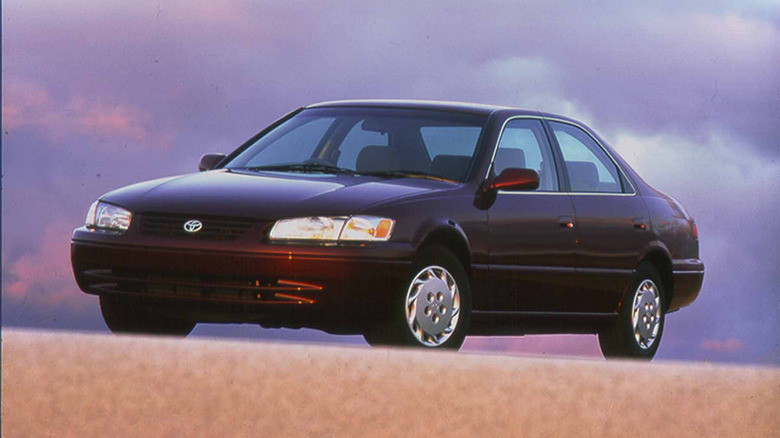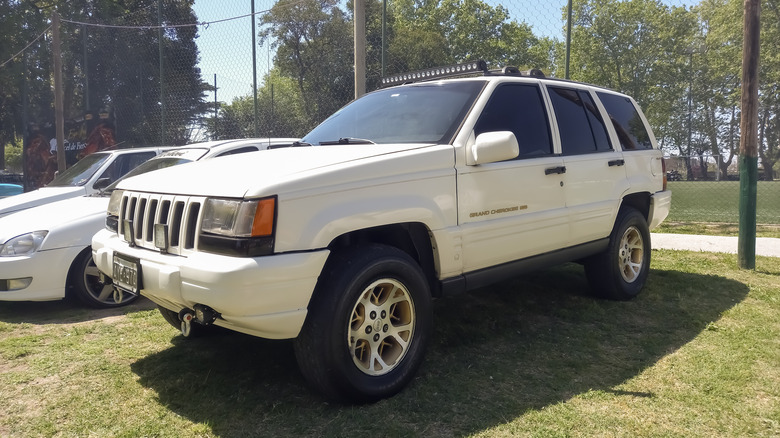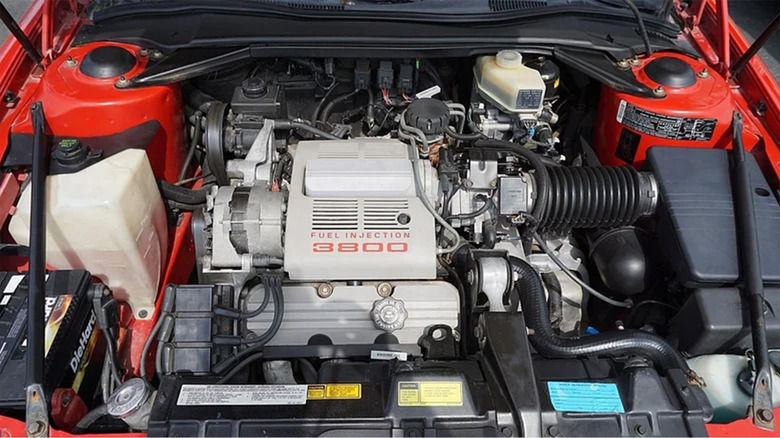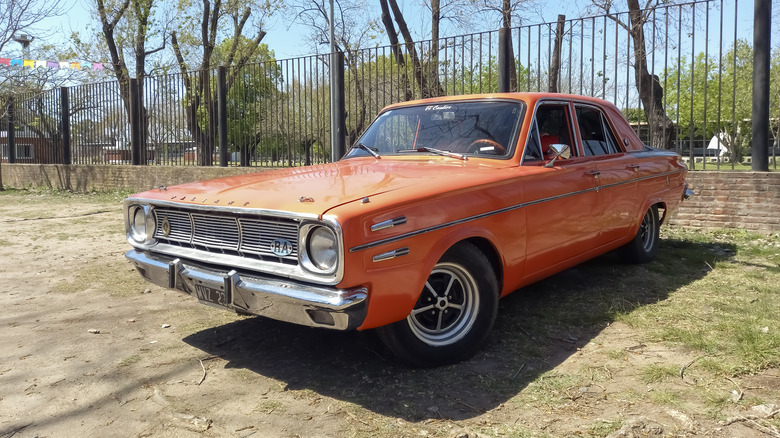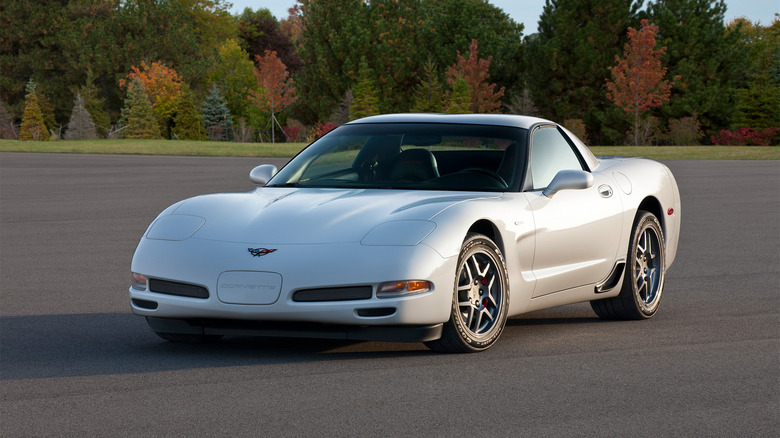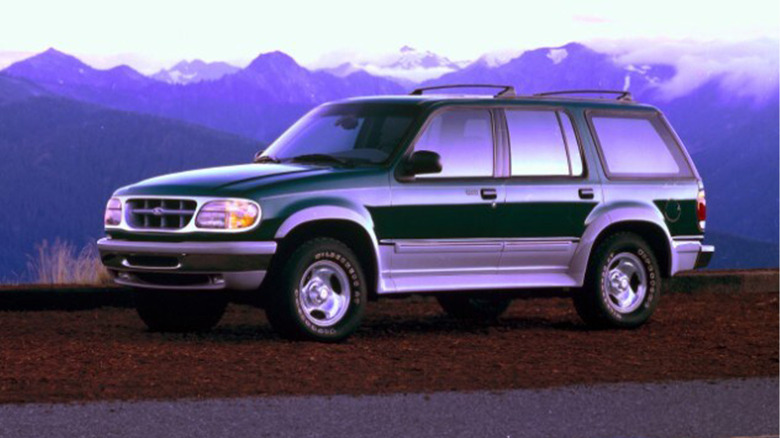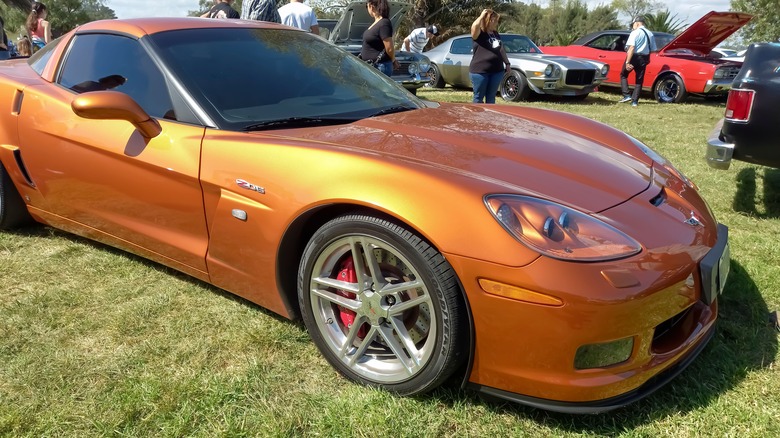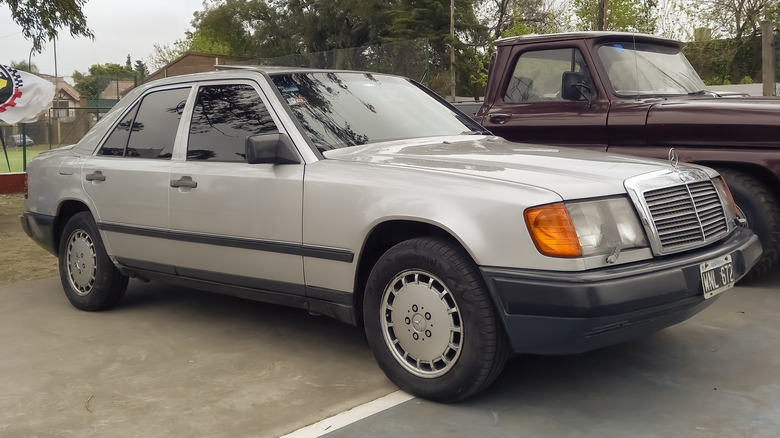The 10 Most Reliable Gasoline Engines Ever Built
Most shoppers look at reliability when buying cars. It's natural. You don't want to buy a car and have it break down the entire time that you own it. Since the engine is arguably the most integral piece of any automobile, that's a really good place to start. Engines have a ton of components and even the most reliable engines can have the occasional problematic part. However, if your engine lasts for 200,000 to 300,000 miles without any major repair or rebuild, then it's safe to assume that it is a reliable engine.
People often associate reliability with older vehicles. While there are some legendary engines from the old days, it's actually a myth that old cars are more reliable than new cars. Modern cars are less expensive to maintain, break down less often, and are easier to diagnose, thanks to improvements in sensors and ODB II technology. It's true that million-mile cars are still ultra-rare. However, unless there's a major defect, any car you drive off a lot today brand new has a much lower chance of being a dud than in the 1980s or 1970s. Manufacturing has become more consistent, and engineering is simply better than it was back then.
With all of that said, aside from some outliers, there are some engines that just don't die. These engines stand above the rest as being relatively bulletproof. Included in the list below are such treasures as the engine that put up a million miles in a Toyota Corolla and one that was manufactured for 30 years because it was just that good. Here are the most reliable engines we could find.
Toyota 22RE
Toyota is known as a reliable brand and it's because of engines like the 22RE. It is one of Toyota's one-million-mile engines and we'll talk about another one later. The 22RE was a 2.4L inline four-cylinder engine that could generate 116 horsepower and 140 lb-ft of torque in its stock configuration. It underwent several changes over the years and there was even a turbocharged version, the 22RTE, for a few years in the 1980s. It was part of Toyota's legendary R engine lineup, which lasted in various forms from 1953 to 1997. The 22RE specifically debuted in 1981 and continued until 1995.
The engine was made primarily out of cast iron and aluminum, although individual parts may vary depending on which year. It was one of the first Toyota engines to use electronic fuel injection in 1982, which helped its reliability a lot. In terms of construction, the 22RTE had some unique characteristics like different pistons, block, and head to account for the turbocharging, but all of these engines were mostly the same during their production run. There was also a 22REC, which is a variant of the 22RE specifically created to meet California emissions standards.
The 22RE made its way into several Toyota vehicles during the 1980s and '90s. That includes the 1981 Toyota Celica, the Toyota Hilux truck from 1981 to 1995, the 4Runner from 1985 through 1995, and the Toyota Standard Pickup from 1985 to 1995. You can find stories on Reddit and automobile forums of people still driving Hilux pickups with hundreds of thousands of miles on them. About the only criticism you could make is that as a four-cylinder engine in larger vehicles, sometimes those vehicles were left wanting for more power.
Toyota 5S-FE DOHC Inline-4
There are a number of stories of late 1990s Toyota Camrys hitting either half a million miles or a million miles. All of those cars had the Toyota 5S-FE DOHC engine. It's a 2.2-liter inline-four that was capable of doing about 132 horsepower and 145 lb-ft of torque. It's one of the most reliable members of the Toyota S engine lineup, which is already known for its above-average longevity. The 5S-FE existed in some form or another from 1990 until 2001. It was also the final Toyota S engine before eventually being replaced by the AZ and AR engines.
The 5S-FE was a lot like the 22RE. It was made of cast iron, forged iron, and aluminum. There were also three generations. The second generation introduced a knock sensor while the third generation introduced additional sensors. In terms of construction, all three generations were more or less the same, with only some minor modifications. It didn't make a ton of power, but it was enough to get drivers from point A to point B while also being reasonably fuel-efficient. It also benefited from the electronic fuel injection system introduced with the 22RE.
Toyota stuffed this engine into a bunch of cars during its run. That includes the Camry, Celica, and Solara. Curiously, Toyota didn't put these in smaller cars, like the Toyota Corolla, which had a 1.6-liter four-cylinder engine instead. In any case, there are tons of these cars out there with well north of 200,000 miles, and just as many stories about people having them for even longer. The 5S-FE DOHC is right up there with the best that Toyota has ever made.
Jeep 4.0 engine
The Jeep 4.0 engine is one of the best engines the brand has ever used in terms of reliability. It could easily do north of 200,000 miles with minor maintenance and repairs. While you won't hear many stories of this thing hitting half a million miles, it's important to consider how much people beat up on their Jeeps. A lesser engine likely wouldn't even make it to 200,000 miles for a brand that's known for its customers doing crazy things like driving up mountains or through swamps. However, a typical daily driver vehicle could potentially get 300,000 miles or more.
The AMC-produced engine debuted in 1986 and started getting added to vehicles in 1987. Jeep used the engine until 2006 before replacing it with the 3.8-liter OHV V6. It was an inline-six engine capable of making 190 horsepower with 235 lb-ft of torque, although those numbers fluctuate depending on the year and which car it was in. It featured a cast iron block and mostly cast-iron parts, such as the cylinder head. It only received minor revisions throughout its production run, even after Chrysler took over the lineup.
By the time Jeep retired the engine in 2006, it was widely considered one of the most reliable the brand had ever used. The engine saw use in the Jeep Cherokee from 1987 to 2001, the Jeep Wagoneer from 1987 to 1990, the Jeep Wrangler from 1991 to 2006, and the Jeep Grand Cherokee from 1993 to 2004. Thus, anyone who drove a Cherokee or Grand Cherokee in the 1990s knows what the Jeep 4.0 feels like.
Buick 3800
The GM 3800, also known as the Buick 3800, is a legendary engine that was known as one that simply refused to die. In fact, we like this engine so much that we wrote about it. Twice. Buick used this engine from 1988 until 2008. It was a V6 capable of creating up to 300 horsepower and 280 lb-ft of torque while supercharged, which Buick did a few times throughout the engine's lifespan. Despite consistently carrying the Buick moniker, the engine was also used in GM and Chevy products.
It's not terribly uncommon to find stories of this engine hitting 300,000 miles. It featured a cast-iron block and omitted a lot of the more complex engine components that would come in future GM engines. The combination of excellent assembly, good construction materials, and simple design made the engine about as bulletproof as an engine can get. Buick made V6 engines for decades, but the 3800 was definitely something special. The first variant of the 3800 was called LN3 or Pre-Series I, depending on who you ask. It was replaced with the L27 (Series I) and eventually the 3800 Series II. The Series II was, by far, the most popular version of the engine and the one that was the most reliable.
The engine made its way into a variety of GM vehicles, including Buick's entire full-size car lineup, along with the Chevy Impala, Chevy Monte Carlo, Oldsmobile Eighty-Eight, Pontiac Bonneville, Pontiac Grand Prix, and several others throughout the late 1980s, 1990s, and until the engine's retirement in 2008. There are few engines this good — the 3800 was absolutely bulletproof.
Chrysler Slant-Six family
The Chrysler Slant Six is one of the brand's most iconic engines. It lasted from 1960 until 1984, and then until 1987 exclusively in Dodge trucks. At its height, it was a powerful engine for its day with a 225-horsepower rating and just under 200 lb-ft of torque. Emissions standards in the 1970s eventually lowered those numbers significantly, but Chrysler continued to use the engine anyway. There are many stories across the Internet of people seeing this engine top 300,000 miles, and it had a reputation for its cockroach-like durability.
The engine saw several modifications over the course of its 27-year lifespan, to the point where it was almost a different engine by the end. By and large, the engine was made of cast iron, although early variants were originally aluminum blocks. The final design did have some aluminum in it, but it was mostly iron. It borrowed the piston heads from the Chrysler B V8 engines. That made the engine slightly easier to manufacture and mechanics of the era would already be familiar with how to service them.
Ultimately, the engine was used in well over a dozen cars and trucks across the Chrysler, Plymouth, and Dodge lineup. For Chrysler, that includes the Fifth Avenue, LeBaron, and Valiant. Dodge vehicles saw the most use with the Challenger, Charger, Dart, Demon, Ram Van, Lancer, Monaco, and Ram models using the engine on and off. Plymouth put it in the Barracuda, Belvedere, Duster, Valiant, and a few others. The final vehicle to use the engine was the Dodge Ram before the engine was officially retired in 1987.
Honda K20
There are several great Honda engines, from the F35 to the F20C. However, for this list, we're going with the K20. It was part of the exceptionally reliable K-series engines, which included the K20, K20A, and the K24. The model number of each engine helps to identify its displacement. The K20 engine was a 2.0-liter four-cylinder engine while the K24 was a 2.4-liter four-cylinder engine. It's widely considered one of Honda's best engines, because it can top 20 years and 200,000 miles with a degree of ease that few other engines can muster.
The K20 was capable of between 156 and 221 horsepower and between 131 and 159 lb-ft of torque, depending on the model. It accomplished this with an aluminum engine block, Honda's already popular VTEC, although the K20A3 was the only engine variant to use it. The other variants used variable timing on both the intake and exhaust valves. As with most Honda engines that have gone into an Accord or a Civic, there were also a range of aftermarket modifications that you could make to maximize the power. The K20 didn't care, it could take it.
Speaking of vehicles using the K20, there were quite a few of them. The K20 specific to this article was produced from 2001 to 2011 and was included in the Civic Type R, Integra Type R, the regular Honda Accord, and a couple of Acura models. However, the K20C still exists today in the Civic Type R, the Honda Accord, and regular Honda Civic, as well as a few Acura cars.
GM 5.3L Vortec 5300
GM's 5.3-liter Vortec V8 is the second GM engine to grace the list, and it's about as reliable as it gets. It's not unheard of for the engine to reach 400,000 to 500,000 miles with minor repairs and maintenance. There are two variants of this engine. The first is the LM7, which is considered the better overall engine. Another generation, the LC9, has an active fuel management system and cylinder deactivation technology. While both engines are highly reliable, the LM7 is the one that's known to be bulletproof, as the next generation had some issues with the extra tech that went into it.
The engine made 270 horsepower and 315 lb-ft of torque, making it quite a powerful engine. GM used the LM7 variant of the engine in various vehicles between 1999 and its eventual retirement in 2007. From there, the LC9 took over and lasted until 2014. The LM7 is a small-block V8 that was made primarily of cast iron and aluminum. Much like the Buick 3800, the materials didn't matter so much as the construction quality. GM just built this thing correctly and its longevity was a result.
The Vortec found its way into a number of larger GM vehicles. They primarily include the Chevy Suburban and the GMC Yukon XL. However, GM also used the engine in the Chevy Silverado, GMC Sierra, Chevy Tahoe, and a couple of other vehicles. Since the LM7 and the LC9 overlapped, some of the aforementioned list of vehicles switched to the newer engine before the prior generation was officially retired, so not every vehicle during the LC7's active years used that engine.
Ford 300
The Ford 300 is a legendary engine. It's not just one of the most reliable engines ever built; Ford used this engine in various configurations for over 30 years. It was an official part of Ford's powerplant lineup from 1965 until the 1996 model year. The inline-six engine produced anywhere from 101 to 170 horsepower depending on the generation, and between 223 and 283 lb-ft of torque. Incidentally, the first generation was the most powerful overall. The Ford 300 lost a lot of its horsepower in the 1970s due to emissions regulations, but eventually regained most of its power by the time it was retired.
Like most engines on this list, the Ford 300 used a cast iron block with cast iron cylinder heads. However, its reliability was most likely due to its simplicity. The engine is easy to work on and easy to fix, which helps keep it running. Parts are easy to find and fix, so even if the engine requires minor repairs, it's nothing even a DIY mechanic can't handle at home. As a result, it's not uncommon to see this engine last for 300,000 miles or more.
Ford used the engine in many cars and trucks over the years. However, it's primarily known as the powerplant of the Ford F-150 for most of its existence. It was simply built and powerful, so Ford also threw this thing into farm equipment, generators, and dump trucks. Ford even sourced the engine to UPS delivery vans. Despite not being produced in nearly two decades, there are machines with the Ford 300 engine still in circulation today. That's some serious staying power.
The small-block Chevy V8
The small-block Chevy engines are in a class of their own. We talked about the Vortec above, which is technically part of the small-block Chevy family, but it's worth talking about the rest of them as well. The family of engines debuted in 1955 and it was so iconic that it influenced the production of future V8 engines both from GM and from competitors. It was not only an iconic lineup of engines, but also some of the most reliable. Some variants of some generations, like the aforementioned LS9, weren't perfect, but Chevy and GM's track record is rather good overall.
There are five generations of the Chevy small-block engine, with the most recent generation still in use today. GM even confirmed the existence of the sixth generation in 2023. Since production of these engines is nearing 70 years, it would take approximately one metric eternity to list all of the various specs. Suffice it to say that the engines were made of either cast iron or aluminum, depending on the generation. The weakest of the bunch, the 262-cubic-inch small-block produced during the 1970s "malaise era," produced just 110 horsepower. The most powerful is the ZZ632, a special performance small-block V8 capable of 1,004 horsepower.
Given its history and its multiple generations, it would almost take less time to list Chevy vehicles that didn't have a small-block V8 in it at one point. Suffice it to say that you'll find the small-block V8 in Chevy's most powerful vehicles, including various generations of the Tahoe, Suburban, Silverado, Camaro, and Corvette. These engines are so good that Chevy hasn't stopped making them yet. That's a pretty good sign of reliability.
Mercedes-Benz OM617
Every other engine on this list uses regular unleaded gasoline. However, the Mercedes-Benz OM617 uses diesel. That is not its only unique characteristic. It's also a five-cylinder engine, known as an inline five, and it's the only one on the list. We're big fans of the OM617, and it's because it's one of the most unique and reliable engines in history. Mercedes made the engine from 1974 until 1991. There were multiple variants as well, that could produce as little as 79 horsepower (24 lb-ft of torque) or as much as 227 horsepower (184 lb-ft of torque).
It was also highly reliable. Here is a Mercedes-Benz 300TD equipped with the OM617 engine, with 782,000 miles on it. There are also confirmed stories online of Mercedes fleet vehicles with this engine hitting 600,000 miles. It utilized a cast iron engine block with cast iron cylinder heads. Unlike many modern vehicles, it used a double-row timing chain that only needed replacing about once every 150,000 miles or so. In short, with some proper maintenance and the occasional repair, this engine could go on seemingly forever.
Diesel engines come with drawbacks as well. They're noisier than typical gas engines, with more vibrations. However, it's difficult to argue with that level of reliability. Mercedes put these engines in E-Class, G-Class, S-Class, and T1-Series cars over the course of its run. While the engine wasn't known as a performance machine, it did hold several world records for diesel engines. You can still find this engine for sale in junkyards, on eBay, and on engine forums with 200,000 miles on them, which is barely broken in for an engine like this.
